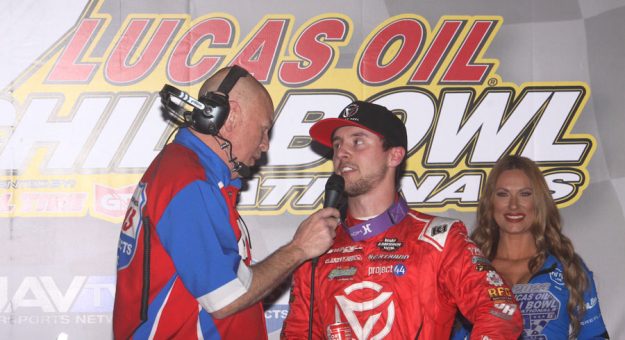The evolution of the Chili Bowl has been well documented. The inaugural event was an artistic success but garnered little attention outside of America’s heartland.
That has certainly changed. While no one would claim that this race has attained the level of seminal sporting events like the Masters, the Super Bowl, or the U.S. Open, as veteran scribe and press room manager Len Hayward noted, it has reached a point where even casual fans of auto racing need no further explanation about the Chili Bowl.
Every event of this stature requires the contribution of people who do their work outside of the spotlight. Those who do their job competently and without fanfare. Since 2000, Hayward has been that guy. It happened by chance.
The previous incumbent in Hayward’s position worked in information technology. In the year 2000 everyone was aflutter about the issues of Y2K and how moving to a new century would impact our growing computer infrastructure. The late Lanny Edwards and Emmett Hahn needed help. Hayward had met Edwards while a student at Texas Tech and later he covered auto racing for the Fort Worth Star-Telegraph.

Edwards called Hayward and asked him if he could “run a computer at the Chili Bowl Nationals.” Hayward agreed and he has been there ever since.
“I told him that I would help with lineups and things but I wouldn’t help with the show,” Hayward said. “Lo and behold I’m doing a little bit of everything now. In fact, right after that first year someone said you are in for life now.”
The job has changed over the years, and now Len helps consult about the conduct of the race and media relations.
One would think the task got harder as national stars began to appear with regularity. Not so, says Hayward.
“They all come here and they just want to be Tony Stewart, or Kyle Larson, or Christopher Bell,” he said. “I used to interview drivers for the Star-Telegram and one of the most engaging interviews I ever did with Sammy Swindell was in this building. You catch them at a time when they are just so much more relaxed.”
One thing is for certain, this event just continued to grow in every way.
When Hayward describes what he has witnessed, there is a touch of disbelief in his voice.
“When I first came here maybe we had 80 or 100 cars,” he says, “then USAC changed the date of their banquet. I think Tony George convinced them to do that and our car count just ballooned. That’s when things really ramped up. Then I think Tony (Stewart) helped a lot. He was in the prime of his career when he won here in 2002 in what was probably the greatest race I had ever seen. This has grown to the point that this is a year-round job for people who are involved with it.”
There were days when Hayward couldn’t even get local television stations to cover the event. That has changed. As for the race itself the quality of the equipment has improved and so has the depth of the driver pool. Sure, maybe 15 to 20 drivers truly have a legitimate chance to win.
The essence of the Chili Bowl has not changed and that alone intrigues Hayward.
“It is the one event where you have pros who do it for a living, but they are racing against a guy who does this once a year,” he said. “It is a weird conglomeration where you take professionals and amateurs and put them together and they all have the same shot.”
